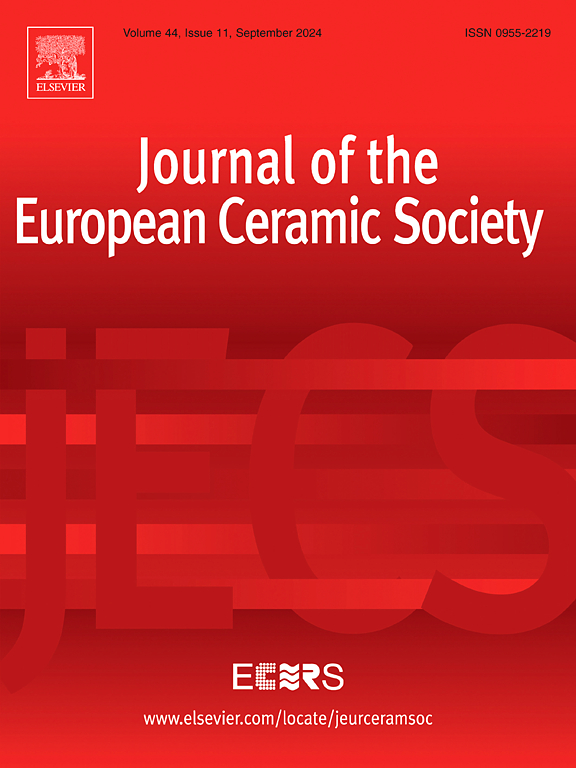Vat photopolymerization-based additive manufacturing of ZrB2-based ultra-high temperature ceramics using low-absorbance precursors
IF 5.8
2区 材料科学
Q1 MATERIALS SCIENCE, CERAMICS
Journal of The European Ceramic Society
Pub Date : 2025-03-20
DOI:10.1016/j.jeurceramsoc.2025.117386
引用次数: 0
Abstract
Ultra-high-temperature ceramics (UHTCs) are promising candidates for thermal structures in extreme environments requiring exceptional resistance to temperatures above 2000 °C. Processing these materials via vat photopolymerization-based additive manufacturing remains unattainable, one major obstacle is the high absorbance of conventional ceramic powders. This study introduces an innovative solution utilizing low-absorbance ZrB2 precursors. The results indicate that carbon sources significantly influence the absorbance of precursors, with sorbitol-derived precursors exhibiting notably lower absorbance values (0.16) at 405 nm compared to pure ZrB2 powders (0.83). The corresponding photosensitive slurries demonstrate favorable photocuring behavior, facilitating successful additive manufacturing processes. Post-processing through carbonization and boro/carbothermal reduction yields ZrB2-based ceramics with high mechanical strength and low thermal conductivity, similar to the properties of most porous UHTCs produced by conventional methods. Notably, the printed gyroid-shaped components display mechanical properties comparable to those of conventionally manufactured simple-shaped ones. This approach holds potential for extending the production capabilities to other types of UHTCs.
采用低吸光度前驱体的还原光聚合法制备zrb2基超高温陶瓷
超高温陶瓷(UHTCs)是极端环境中需要特殊耐2000°C以上温度的热结构的有希望的候选者。通过基于还原光聚合的增材制造来加工这些材料仍然是不可能实现的,一个主要障碍是传统陶瓷粉末的高吸光度。本研究介绍了一种利用低吸光度ZrB2前体的创新解决方案。结果表明,碳源显著影响前驱体的吸光度,山梨醇衍生的前驱体在405 nm处的吸光度值(0.16)明显低于纯ZrB2粉末(0.83)。相应的光敏浆料表现出良好的光固化行为,促进了成功的增材制造工艺。通过炭化和boro/碳热还原后处理得到的zrb2基陶瓷具有高机械强度和低导热性,与传统方法生产的大多数多孔UHTCs的性能相似。值得注意的是,打印的陀螺形状部件显示出与传统制造的简单形状部件相当的机械性能。这种方法有可能将生产能力扩展到其他类型的uhtc。
本文章由计算机程序翻译,如有差异,请以英文原文为准。
求助全文
约1分钟内获得全文
求助全文
来源期刊

Journal of The European Ceramic Society
工程技术-材料科学:硅酸盐
CiteScore
10.70
自引率
12.30%
发文量
863
审稿时长
35 days
期刊介绍:
The Journal of the European Ceramic Society publishes the results of original research and reviews relating to ceramic materials. Papers of either an experimental or theoretical character will be welcomed on a fully international basis. The emphasis is on novel generic science concerning the relationships between processing, microstructure and properties of polycrystalline ceramics consolidated at high temperature. Papers may relate to any of the conventional categories of ceramic: structural, functional, traditional or composite. The central objective is to sustain a high standard of research quality by means of appropriate reviewing procedures.
 求助内容:
求助内容: 应助结果提醒方式:
应助结果提醒方式:


